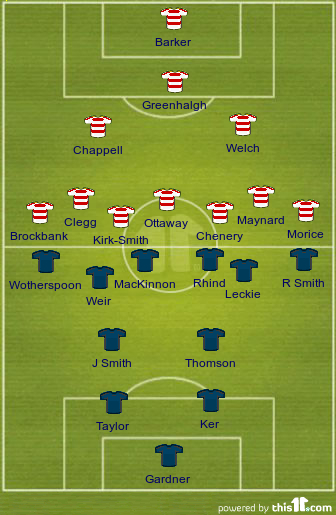Early Days
When the game began tactics were basic. In fact it would be little exaggeration to suggest that there were no tactics in the earliest days of football. Emerging as it did from a mob game, often played by hundreds of participants early football was little short of chaos. Before the Laws were codified in 1863 football had been enthusiastically embraced by many of England’s premier public schools, but even there it remained little short of anarchy.
At almost all the schools the primary part of the game was dribbling. Players would effectively take it in turns to dribble towards the opposing goal until they were stopped or scored. Deliberate passing was unheard of, though in some cases the ball might ricochet off a defender to a team-mate who would continue the charge forward.
The reasons for this style of football were numerous. Firstly football was encouraged at these schools because of its manly nature, and to pass was considered unmanly. Secondly a number of schools either prevented any passing forward (as is the case in rugby today) or made it very difficult due to prohibitive offside laws. Thirdly at a number of the schools, the games were played in narrow cloisters (corridors which surrounded an open quadrant) and consequently there was little advantage gained from passing.
The old boys of a number of the most famous public schools gathered in 1863 to form the Football Association and later codify the Laws of the game. The dominance of the public schools had a dramatic effect on early tactics as they largely followed those that had applied at schoolboy level. As in modern school yard football there were large numbers of attackers and very few midfielders or defenders.
The earliest games under the official Laws saw the standard formation played with 9 forwards, and 2 defenders. The strangest point about these early games was that there was no designated goalkeeper, as the position was not laid down until 1870. By the time of the first international in 1872 between England and Scotland, the English had made little progress in terms of tactics. Their Scottish rivals however, had made two notable innovations.
 |
| England (above) v. Scotland, 1872 |
The first of these was a change of formation. The Scots had moved to an organised structure of 2 full-backs, 2 half-backs, and 6 forwards. In this system the full-backs acted as central defenders, though given that there were no other defenders, they were expected to cover the whole back-line. The half-backs (modern day midfielders) were used to link the defence and attack, while the forwards were expected only to attack. The forwards were though given fairly strict roles which they were expected to perform. The outside-forwards (outside-right and outside-left) would hug the touchline, the inside-forwards (inside-right and inside-left) would act as providers, and the centre-forwards would be expected to score the goals.
The second innovation was really a natural corollary of the first as deliberate passing was introduced for the first time. In the game’s earliest day brute strength had been as much an element of dribbling as skill. Many of the best player of the day relied on their physical size to outmuscle opponents. In 1872 Queens Park (the first Scottish club) faced Wanderers in the semi-final of the FA Cup, and immediately noticed that that they were significantly smaller than the English side. To overcome that problem the Scots realised they would need to use more brains than brawn. To that end the Scots exchanged quick passes to get past their larger opponents. When England met Scotland later that year, the Scots employed the same stratagem and in both cases the games ended a draw. Given that the Scots had been playing for a much shorter time it was clear that there was something in this passing game. The next time the two nations played, England had adopted Scotland’s formation, but it would be some time before they would introduce passing.

No comments:
Post a Comment